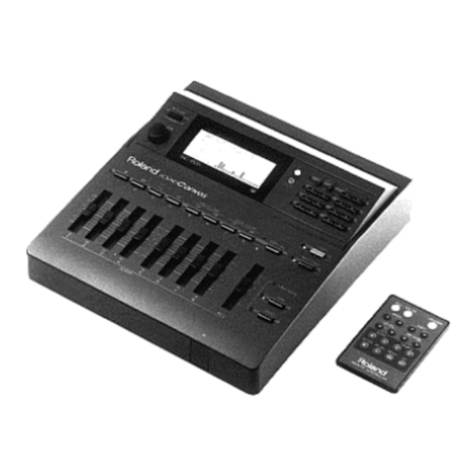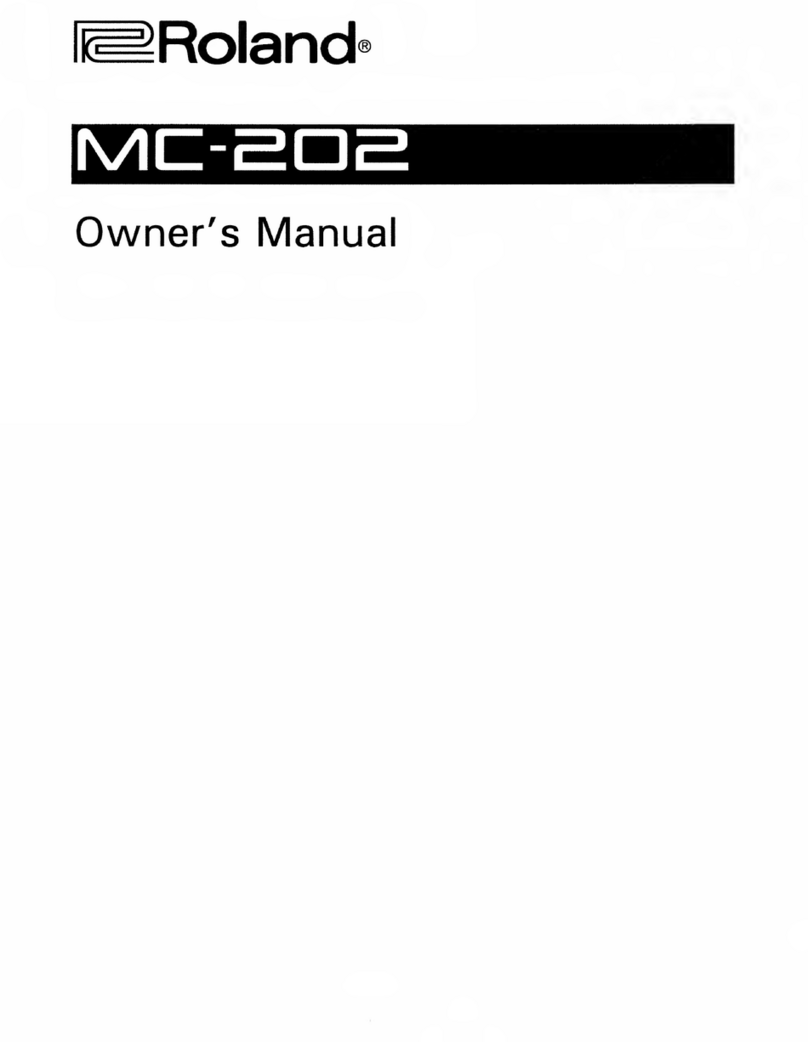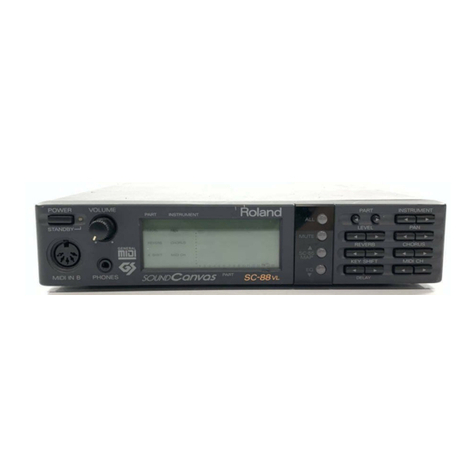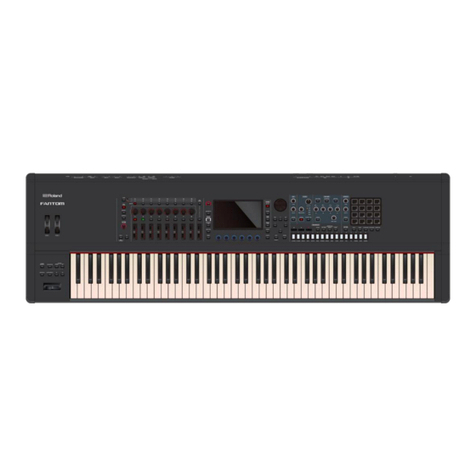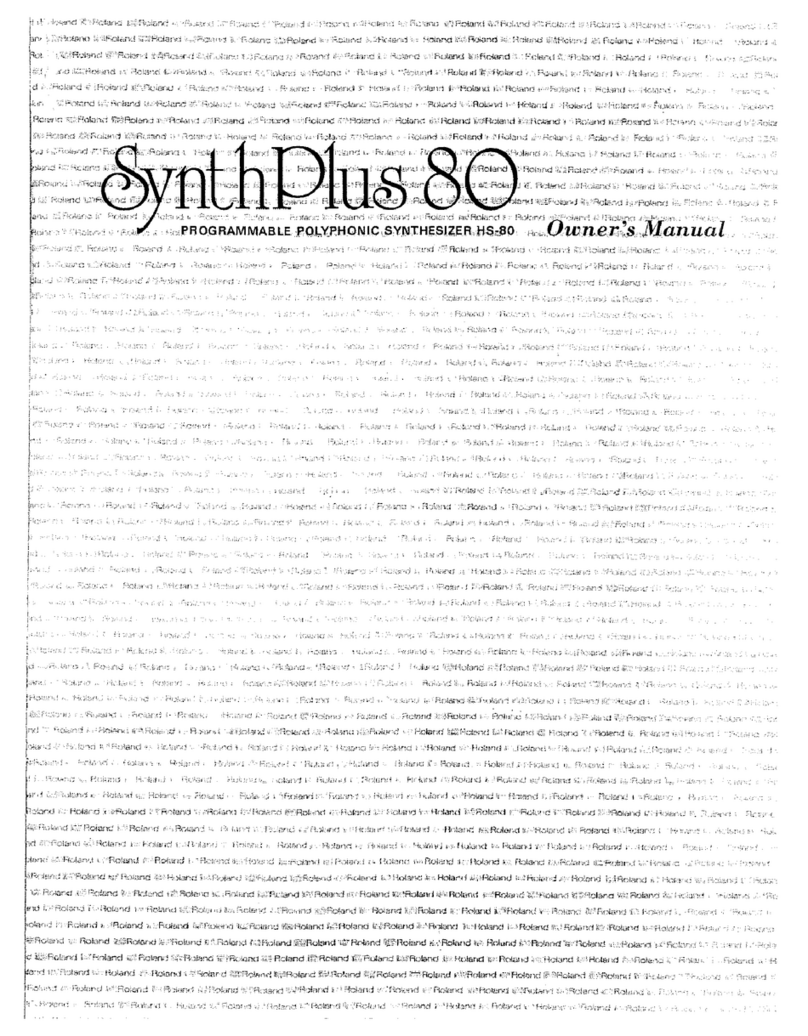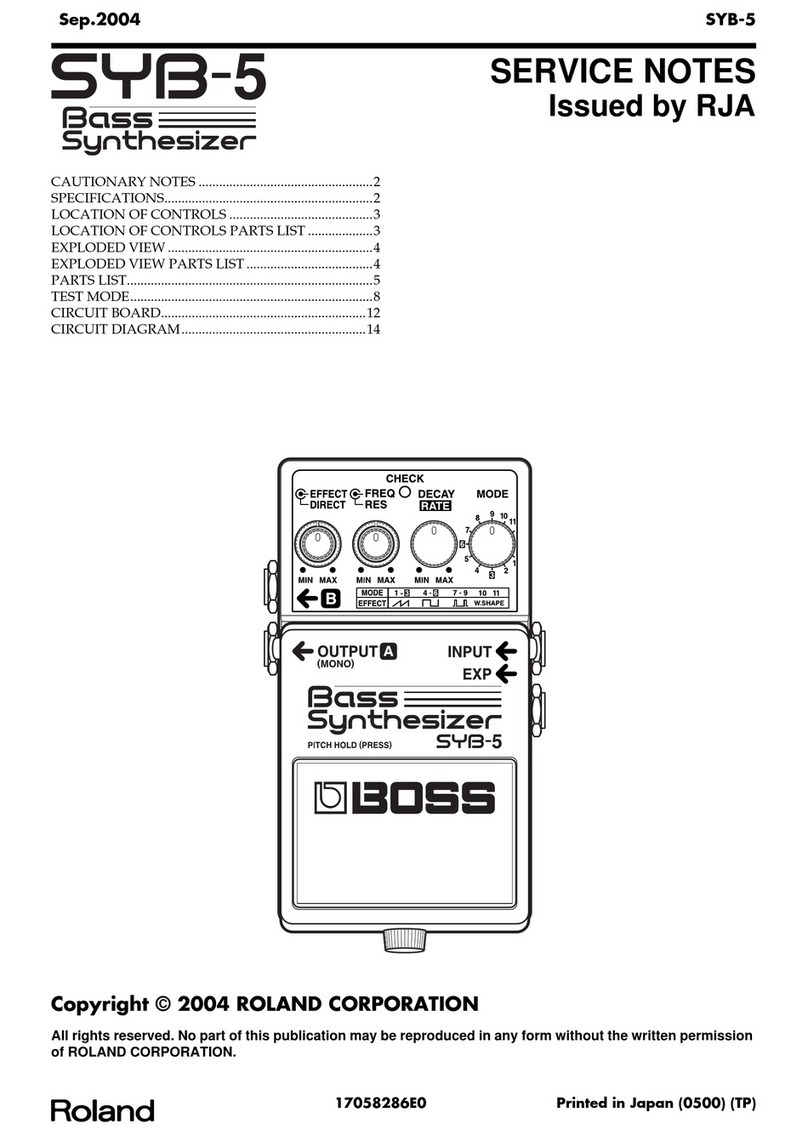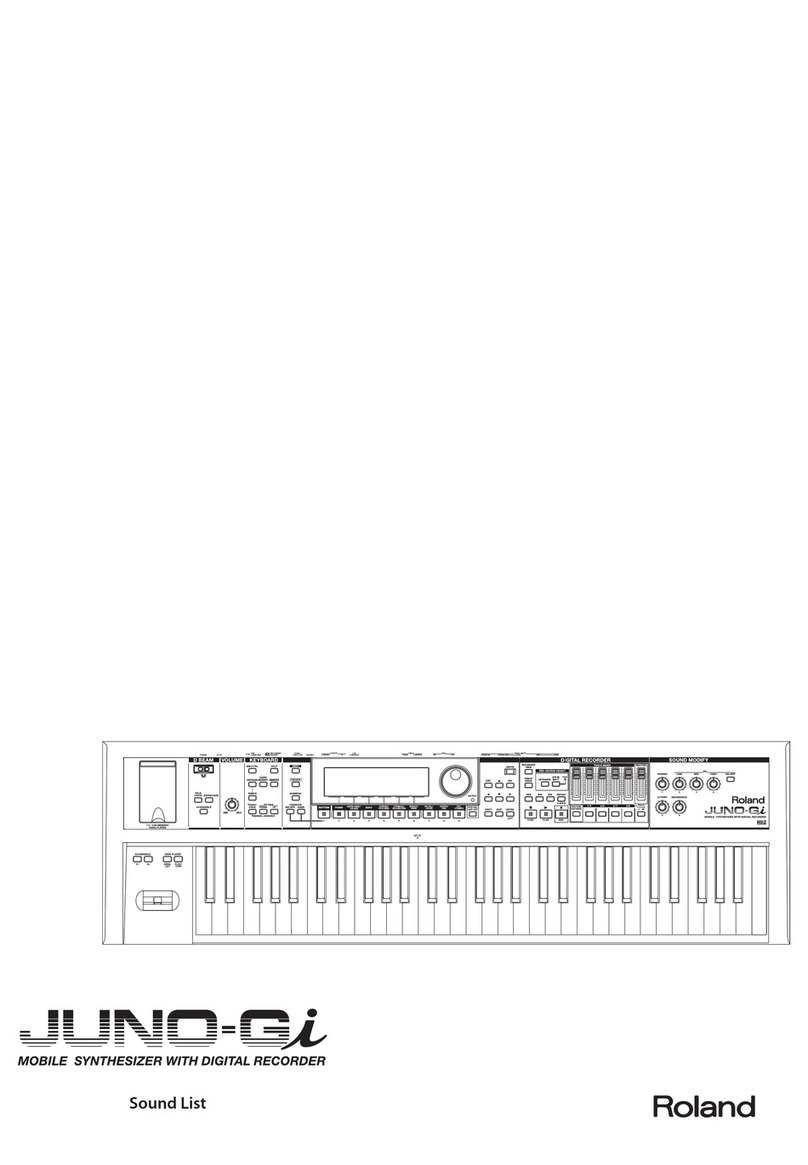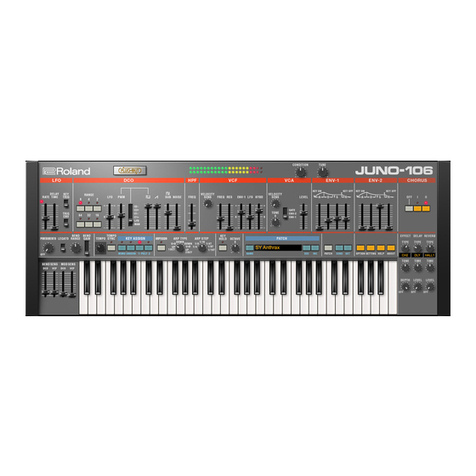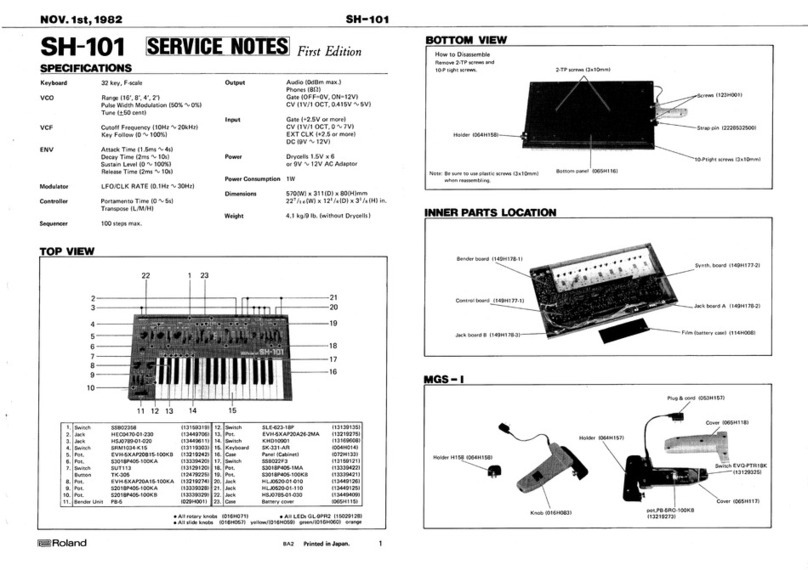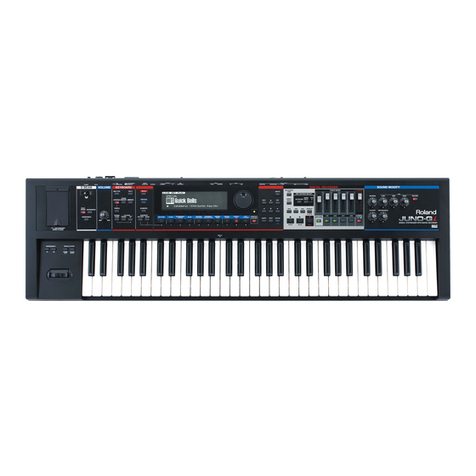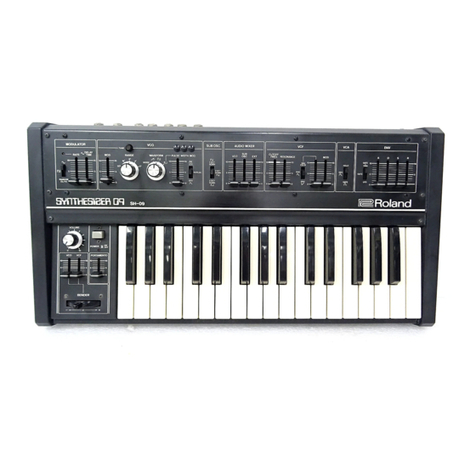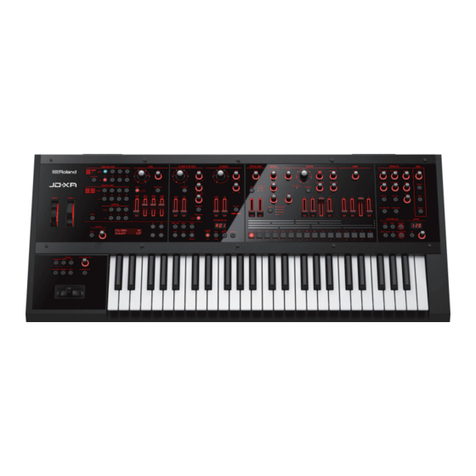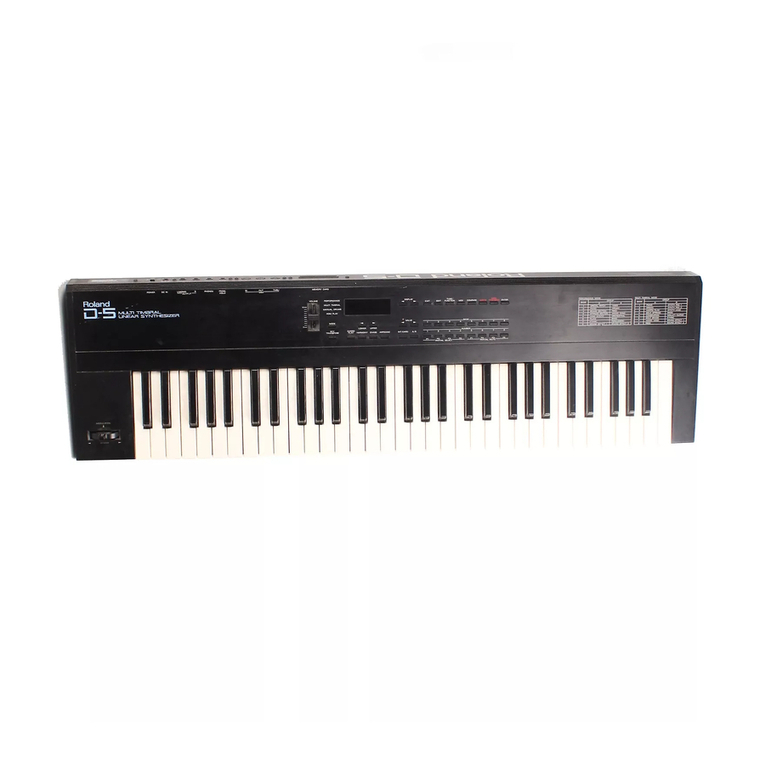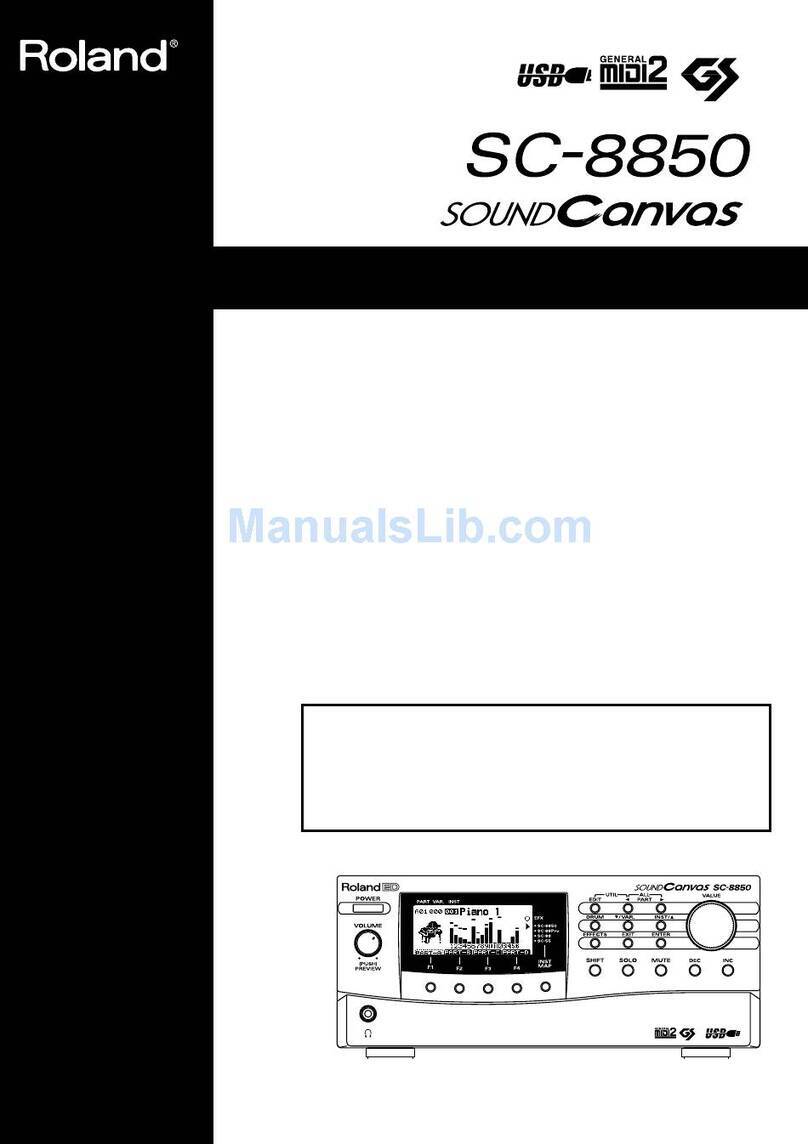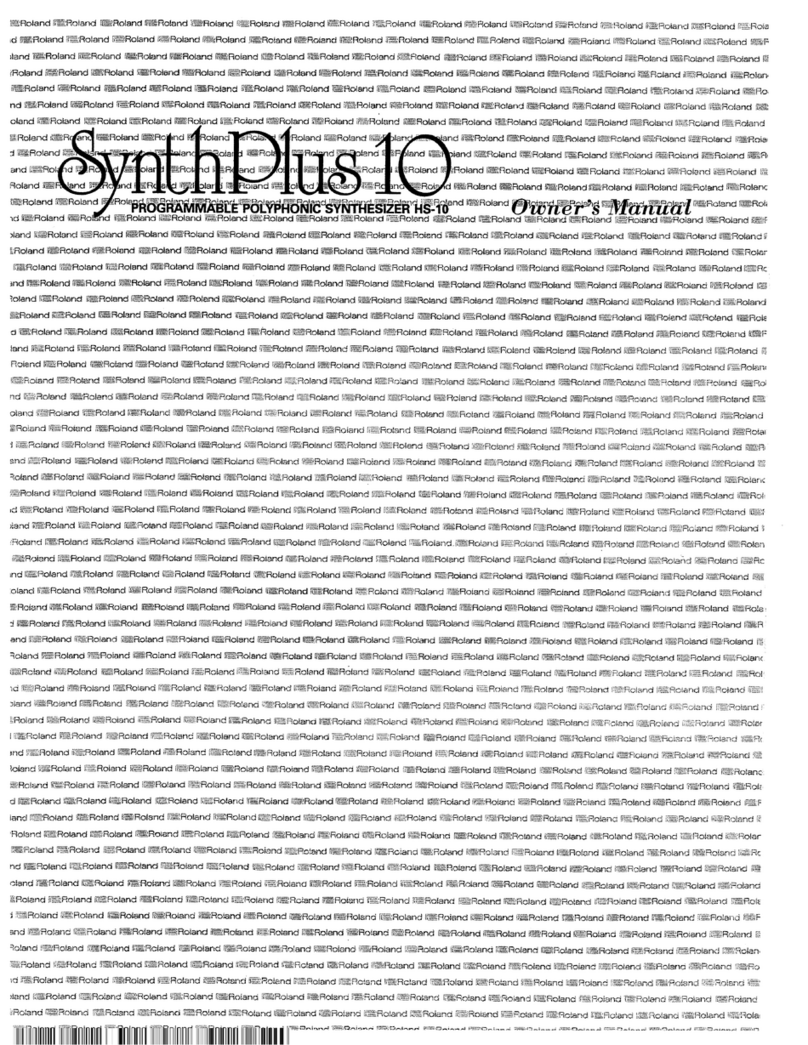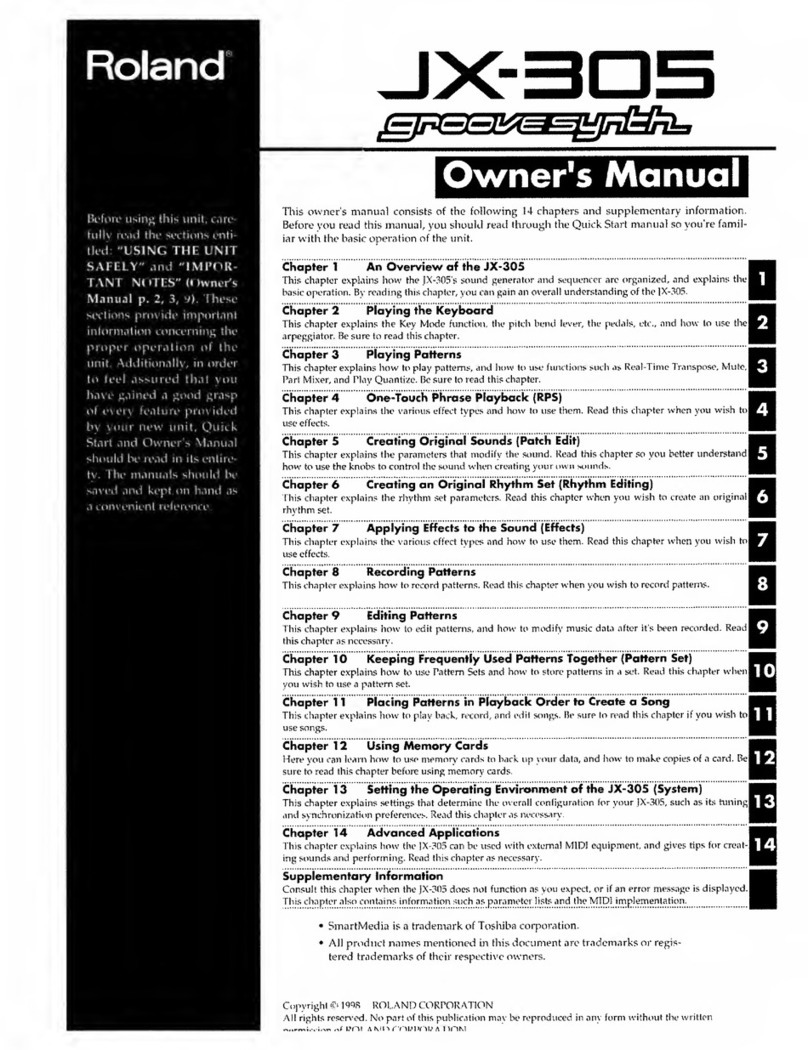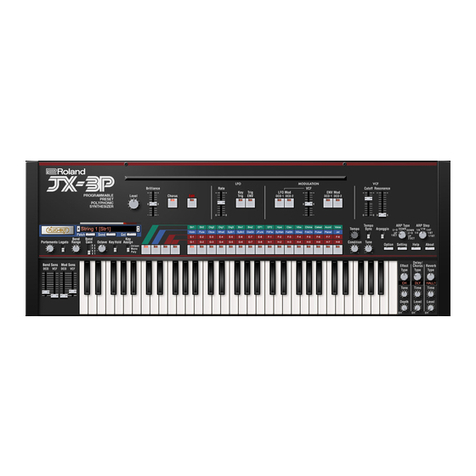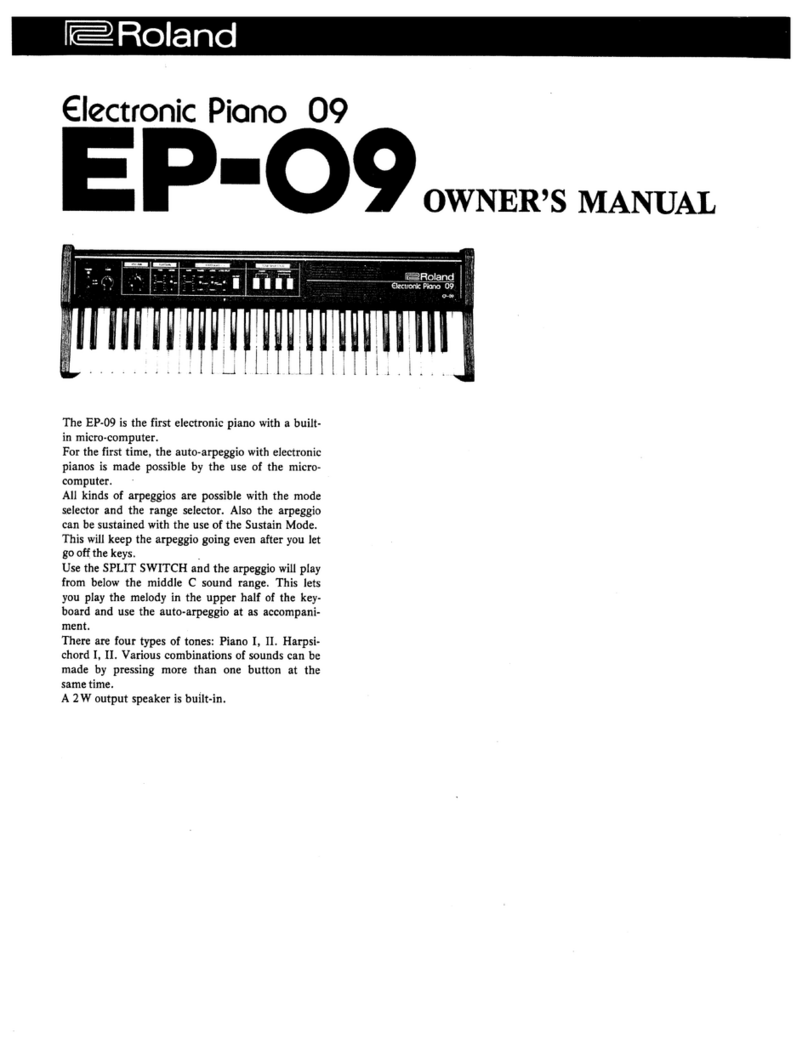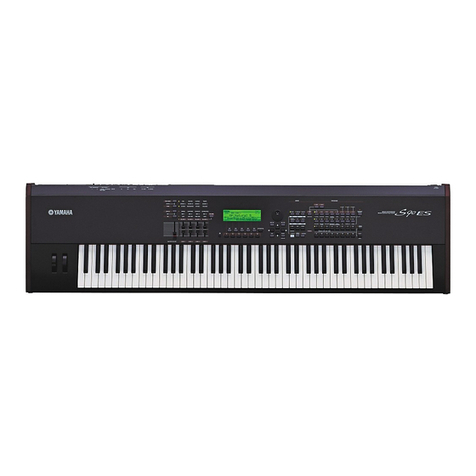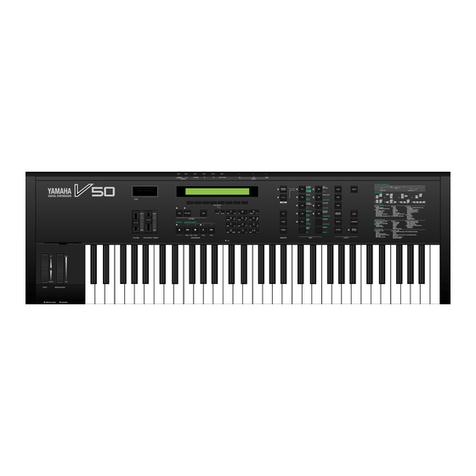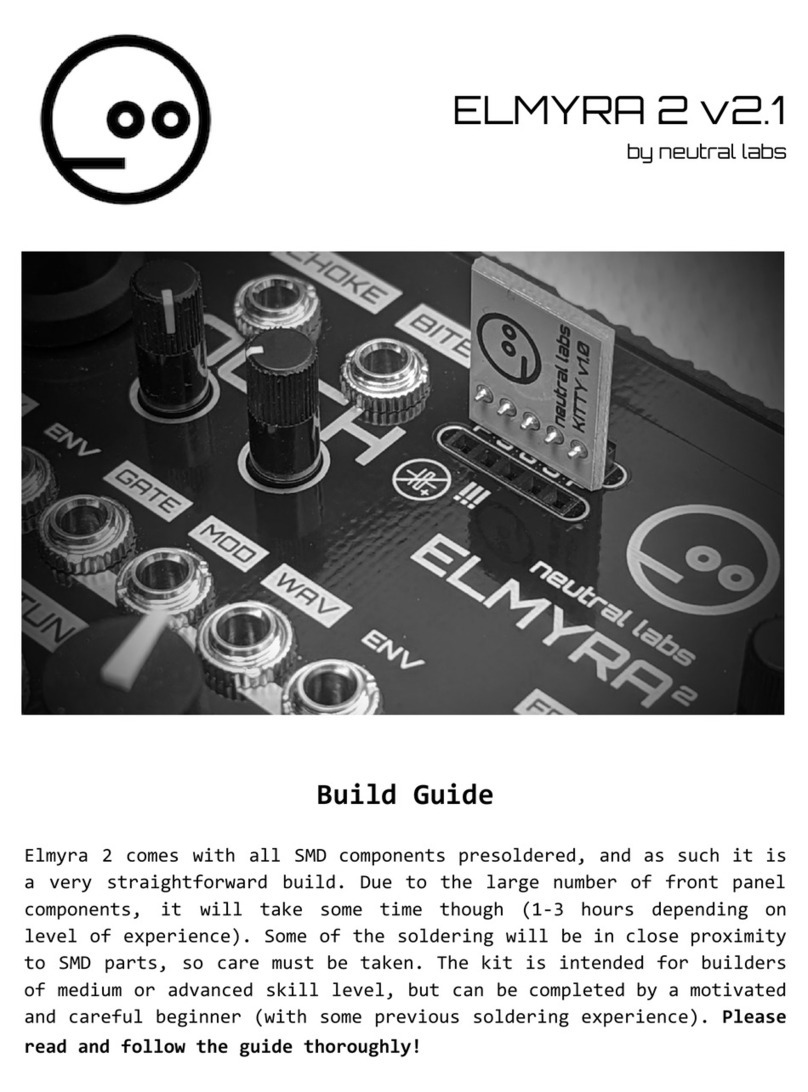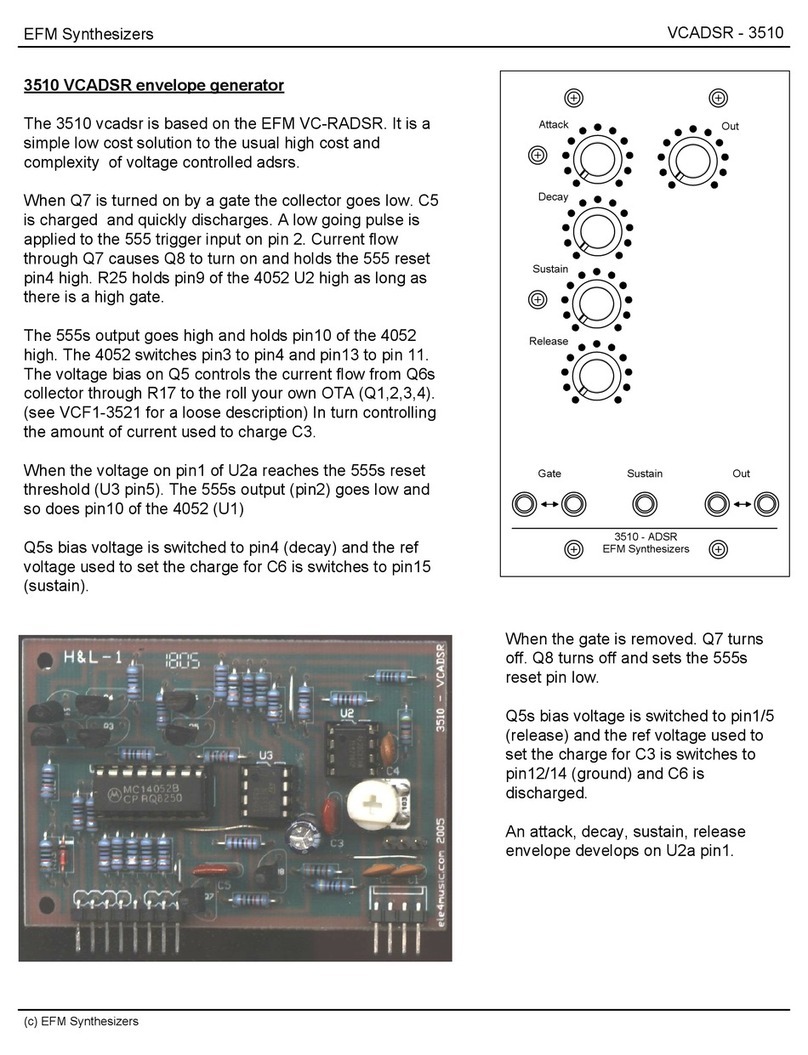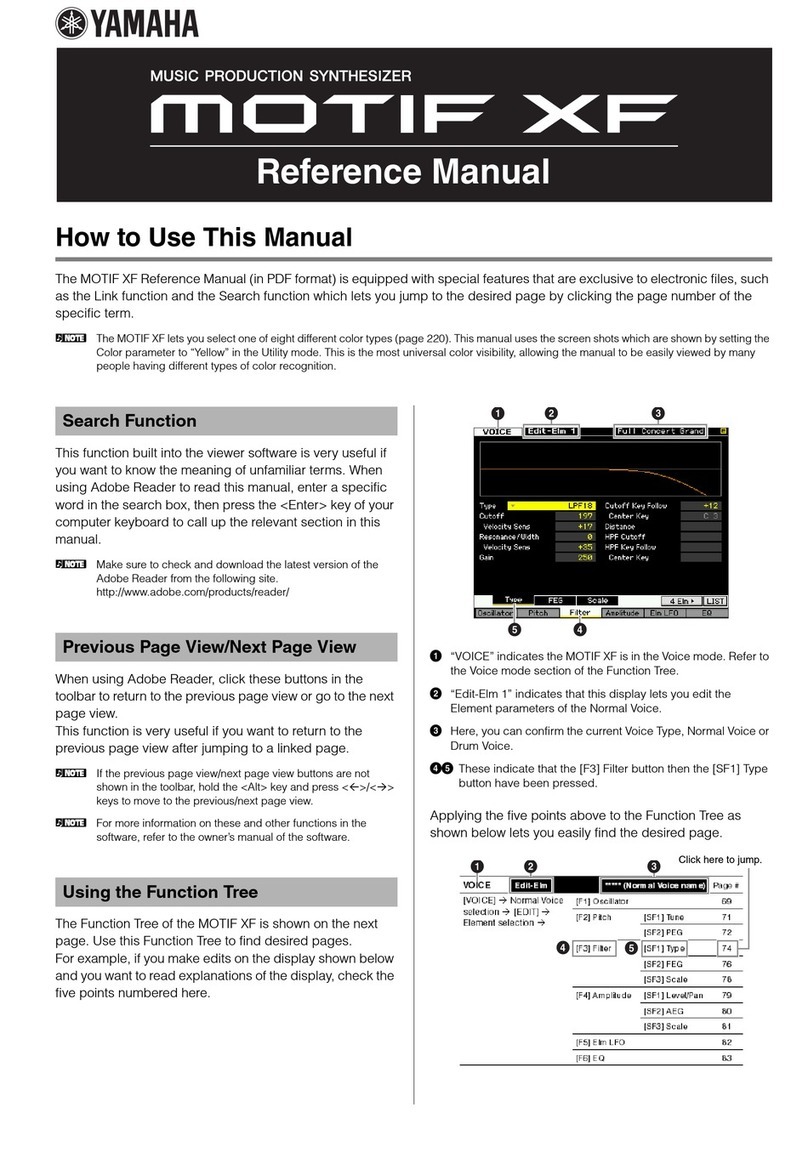
®ÂØÒňή
XV-88
Expandable Synthesizer
TurboStart
TBS116 © 2000 Roland Corporation U.S., 5100 S. Eastern Ave., Los Angeles CA 90040 Faxback # 20147 Page 2
Using the Arpeggiator
The XV-88’s arpeggiator can add a dynamic element
to live playing. Use the following procedure to
activate and use the arpeggiator:
1. Press ARPEGGIO so it’s lit.
2. Hold down several keys on the keyboard.
3. While holding ARPEGGIO, cursor to Style, and
turn the VALUE dial to select the desired type of
arpeggiation.
Using the Favorite List
You can collect all of your favorite patches and
rhythm sets in a “favorite list” that allows you to get to
them quickly and easily.
Use the following procedure to store and retrieve
patches and rhythm sets using the favorite list:
1. Select a patch or rhythm set you’d like to store in
your favorite list.
2. While holding SHIFT, press ENTER to store the sound in
the list.
3. Hold SHIFT and press PATCH FINDER to view
the favorite list.
4. Turn the VALUE dial to select the desired patch
or rhythm set.
5. To remove the currently selected patch or
rhythm set from the favorite list, hold SHIFT and
press UNDO/COMPARE.
6. Press EXIT to leave the favorite list.
Saving Data to a SmartMedia Card
All of the settings in internal memory can be saved as
a single file onto a SmartMedia card. Use the
following procedure to format and save data to a
SmartMedia card. If your card is already formatted,
skip Steps 4-7:
1. Insert the Smart Media card into the XV-88.
2. Press UTILITY.
3. Cursor down to access Utility Menu 2.
4. Cursor to CARD and press ENTER.
5. Cursor to FORMAT and press ENTER.
6. Press ENTER twice to format the card.
Note: This will erase all of the data on the card.
7. Press EXIT twice.
8. Cursor to SAVE, and press ENTER.
9. Use the CURSOR buttons and the VALUE dial to
name the file you’re saving, then press ENTER.
Selecting Performances
Use performances to create layers, splits, or other
complex combinations of up to 16 patches and
rhythm sets, and for using the XV-88 with a multitrack
sequencer.
Here’s how to select a performance:
1. Press PERFORM.
2. Turn the VALUE dial to select the desired
performance.
Try out the following performances:
• USER: 01 Andreas Cave (layered patches)
• USER: 02 XV Piano&Bs (2-way split)
• USER: 11 Humanizer (cool effects)
• USER: 17 SuiteCombo+ (4-way split)
The above performances are set up for live-
performance applications. If you’re connecting the
XV-88 to a sequencer, check out these
performances:
• PR-A: 04 SEQ: Fusion
• PR-A: 03 SEQ: FunkRock
• PR-A: 17 SEQ: World
Note: These performances (and the entire Preset A
bank) are optimized for sequencing. They have all 16
MIDI channels turned on and patches assigned to
them. For more information on using Performance
mode, see Pages 35-60 in the XV-88 Quick Start.
When sequencing, you may also need to adjust the
XV-88’s Local On/Off parameter —see Pages 169-
170 in the XV-88 Owner’s Manual to learn about this
parameter.
Using the XV-88 in GM Mode
General MIDI mode is great for playing back
Standard MIDI Files using the XV-88’s sounds. Use
the following procedure to enter and use General
MIDI mode:
1. While holding SHIFT, press PERFORM.
2. Use the left and right CURSOR keys to select
Part 1-16 as shown in the upper-right corner of
the display. The 16 parts correspond to MIDI
Channels 1-16, respectively.
3. Turn the VALUE dial to choose a patch for the
currently selected part.
4. Press PATCH or PERFORM to exit GM mode.


